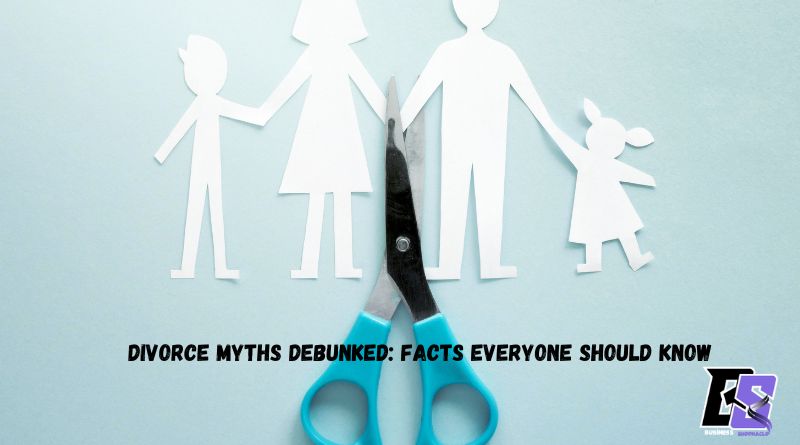Divorce Myths Debunked: Facts Everyone Should Know
Common Misconceptions About Divorce
Divorce is one of the most misunderstood life events, and myths flourish whenever people discuss separation or hear a dramatic story on TV. The media often portrays divorce as an all-out battle, with endless shouting matches and a winner-takes-all mentality. However, the reality for many couples is far from this stereotype. Most legal experts, such as experienced divorce lawyers in Hernando County, Florida, emphasize that the legal process is designed to achieve fairness and do what works best for both parties, and especially for any children involved.
People often believe that if a relationship ends, someone “wins” and someone “loses,” but the court’s actual role is to reach an equitable—rather than an equal—distribution of assets, responsibilities, and the care for children. In reality, divorce can be a healthy and mature decision, especially when spouses are committed to resolving issues respectfully. No one-size-fits-all rule applies. According to recent research from Pew Research Center, U.S. divorce rates have stabilized, and social stigma is falling away, which encourages individuals to choose what serves their family’s welfare the most. Separating couples are more often working together rather than against one another.
Top Reasons Couples Decide to Separate
While infidelity frequently draws the headlines, you might be surprised to learn that most couples cite other reasons for ending a marriage. The decay of open communication and ongoing unresolved arguments are some of the top triggers. Many partners grow apart as life brings new jobs, raises, losses, kids, or moves, and the relationship doesn’t adapt. Constant stress about bills or debt only adds pressure. People sometimes hide their financial struggles, which eventually affects trust and partnership. When goals and priorities shift—whether that’s moving to a new city, focusing on careers, or even changing values—differences can push couples to re-evaluate their future.
These complexities are reflected in data published by the Centers for Disease Control and Prevention, which shows divorce rates respond to broader social changes, economic downturns, and shifts in cultural expectations. A series of small disagreements or major life events can create divides that simply grow too wide. Being aware of these stressors not only helps individuals recognize warning signs in their own relationships but also encourages seeking help early. Often, honest conversations, counseling, or legal advice can make all the difference, long before divorce papers are filed.
Does Divorce Always Harm Children?
One of the biggest concerns for any parent considering divorce is the well-being of their children. Many assume divorce is inevitably traumatic for kids, but researchers and child mental health experts find the outcomes are far from uniform. Children’s reactions depend largely on how parents approach the separation and the relationship they maintain afterward. When both parents remain involved, keep communication open, and cooperate to minimize conflict, children often adjust well despite initial challenges.
- Providing age-appropriate explanations can help kids understand and process big changes in the family dynamic.
- Regular routines—such as family meals, bedtime stories, or weekend outings—can restore much-needed stability and comfort.
- Open discussions about feelings and ongoing support allow children to build resilience.
Research indicates that children who witness high levels of conflict between parents before a divorce may actually fare better after a separation, especially if it creates a calmer environment. With a thoughtful approach to co-parenting, children can thrive in two loving homes, free from ongoing tension or discord.
Facts About Property Division
The belief that everything will be split 50/50 during a divorce is a widespread misunderstanding. Property division is a process guided by two major legal models—community property and equitable distribution—which vary by state. Community property states typically split assets acquired during the marriage equally. In contrast, equitable distribution states focus on dividing property in a manner that the court considers fair, taking into account factors like each spouse’s financial situation, earning potential, and even contributions to the home or career sacrifices.
Real-life property division can get complicated when items of emotional or sentimental value are involved. For example, one spouse may want to keep the family home because it’s where the children grew up, or maybe there’s a joint business that neither wants to surrender. To avoid disputes, it is a good practice to maintain thorough records—bank statements, pay stubs, and investment accounts—and to be transparent with the other party about everything you own and owe.
- Inventory all assets, including real estate, retirement accounts, vehicles, and personal property.
- List all debts—such as mortgages, credit cards, and loans—upfront.
- Carefully review documentation before negotiations begin to prevent surprises later.
Honest disclosure and respectful discussions are the foundation for a less stressful division process.
The Truth About Spousal Support
Spousal support (also called alimony) carries its own set of myths. Some believe that if you get divorced, you will automatically pay or receive alimony for life; in reality, these arrangements are rarely so straightforward. Judges consider the duration of the marriage, the lifestyle established, each spouse’s earning potential and health, and even household contributions, like time spent raising children or supporting a partner through education. The aim is to help both spouses adjust to independent life, not to create a long-term financial connection.
In modern divorces, couples are increasingly choosing to settle these matters privately through mediation or collaborative agreements rather than leaving it up to a judge. Such agreements often offer creative solutions: lump-sum payouts, temporary support as one spouse completes further education or job training, or phasing out payments over several years. In each case, the focus shifts away from outdated assumptions about lifelong dependency and toward solutions that enable all parties to move forward with dignity and stability.
Effective Co-Parenting Strategies Post-Divorce
Co-parenting introduces a new way to care for children after divorce, but it isn’t inherently stressful or negative. What matters most is a willingness to prioritize your child’s well-being above lingering disagreements. Regular, respectful communication, along with clearly defined boundaries, helps prevent conflicts from interfering with parenting. Many separated families use digital tools—like shared calendars or co-parenting apps—to track activities and manage information.
Tips for Positive Co-Parenting:
- Stay focused on what’s best for your children in every conversation and decision.
- Set realistic expectations and stay flexible when life throws a curveball.
- Let children express their feelings, but don’t force them to pick sides.
- Use neutral drop-off and pick-up locations to avoid unnecessary tension.
- Seek counseling if communication repeatedly breaks down.
Over time, cooperative co-parenting benefits children and eases stress for both parents, allowing the family to build new, positive routines.
Steps Involved in Filing for Divorce
Filing for divorce can seem daunting at first, but understanding each step can lessen much of the anxiety. The process typically begins by gathering necessary documents, such as marriage certificates, financial statements, records of property, and any existing prenuptial agreements. Filing the initial petition starts the legal process, but that is only the first step.
- Once the petition is filed, both parties share required information about assets, incomes, and debts.
- Couples negotiate terms on issues like child custody, child support, and property division. At this stage, many find mediation or collaborative meetings helpful.
- Some cases proceed to court when negotiations stall, leading to hearings for unresolved matters.
- Once all details are decided, the court confirms the divorce with a final decree, making the agreement legally binding.
Some states have mandatory waiting periods between filing and finalization. Throughout the process, professional guidance—legal, financial, or counseling—can make the journey smoother and help both parties reach manageable, realistic outcomes tailored to their unique situation.
Healing and Growth After Divorce
Divorce brings a profound change, but it can also be a launchpad for a more fulfilling next chapter. Initial emotions—sadness, anger, confusion—are common, but over time, people often discover surprising sources of strength and optimism. Staying connected to supportive loved ones, building a new daily routine, and seeking professional therapy can provide perspective and guidance for managing big transitions. Many find that setting new personal and professional goals helps restore confidence and excitement.
Over the months and years, listening to personal needs—whether that means rekindling old passions, making time for self-care, or exploring new relationships—helps former spouses redefine happiness on their own terms. Many individuals find that, as they heal, they become better parents, partners, or friends. The path is rarely straightforward, but experience and research show that, with patience and support, the future after divorce can be rich with growth, resilience, and joy.
No matter where someone stands in the process—whether just considering separation or finalizing a legal decree—knowing the realities and support options at every step makes each decision a little less daunting and a lot more empowering.




